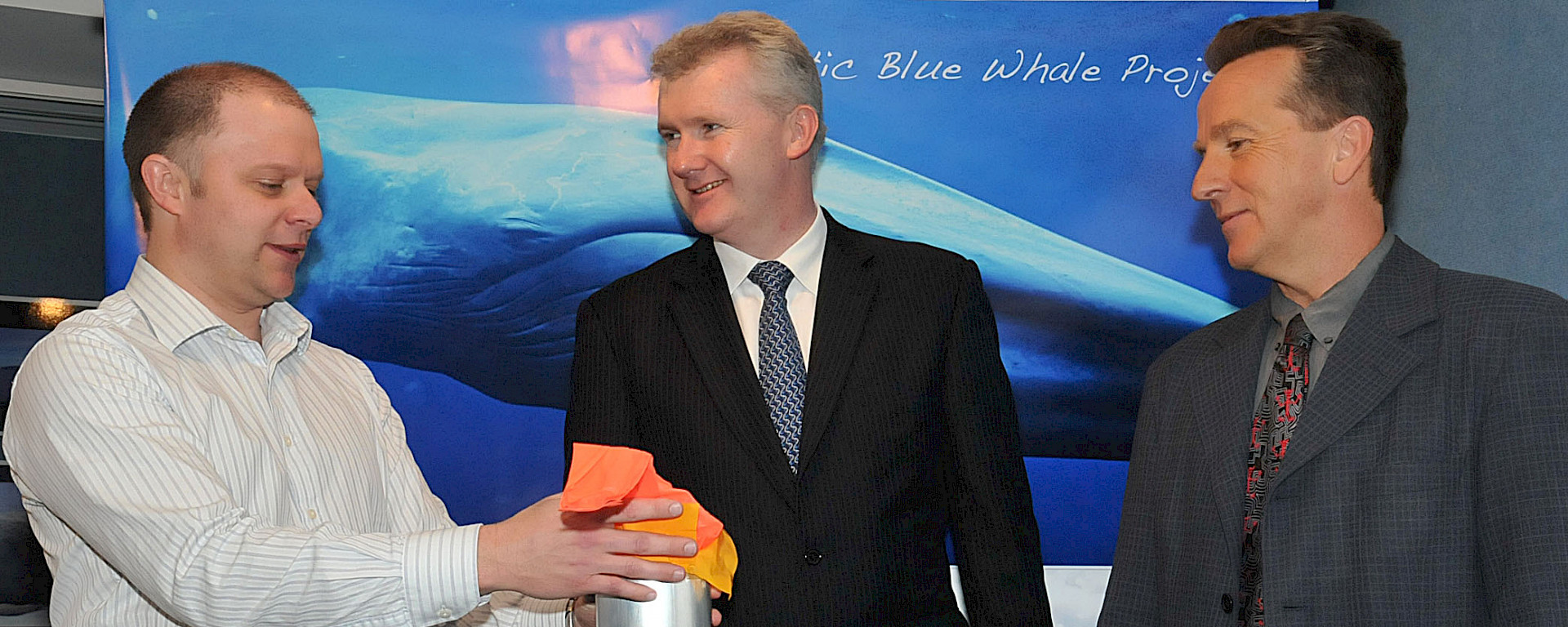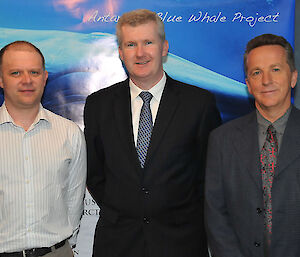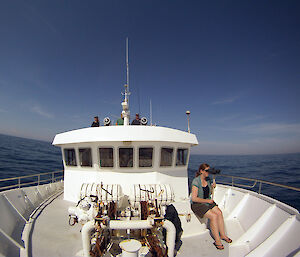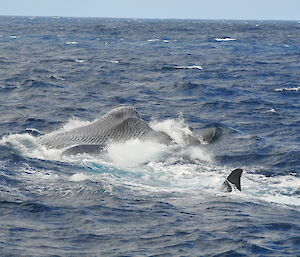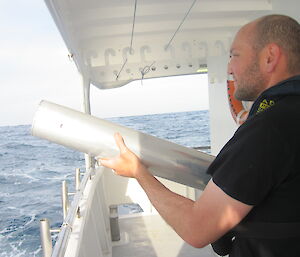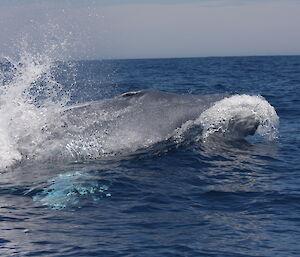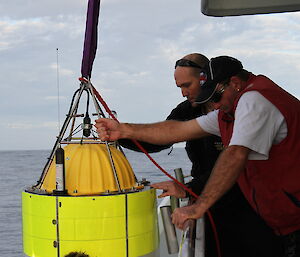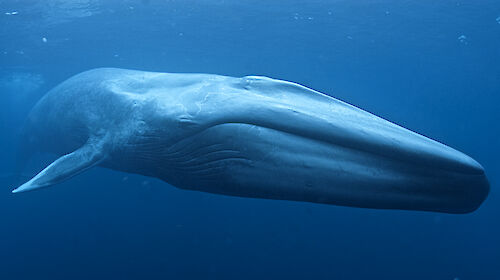By using sound rather than sight to initially detect the whales, the scientists significantly improved the likelihood of finding and counting whales in the vast Southern Ocean.
The research is a core part of an Australian-led international project to estimate the abundance, distribution and behaviour of the species which was decimated in the early 1900s when industrial whaling killed approximately 250,000 animals.
To test the technology, the team of Australian Antarctic Division scientists deployed directional sonobuoys in northern Bass Strait in January and March this year.
Environment Minister Tony Burke, who was given a demonstration of the science in Hobart today, said he applauded the innovation and dedication of Australian scientists towards finding out more about this magnificent creature.
“Blue whales are under threat of extinction and improved scientific knowledge will help in the conservation and recovery of the species,” he said.
“This research reinforces Australia’s commitment to non-lethal research of whales.
“This contrasts with Japan’s so-called ‘scientific whaling’ where the alleged research begins with a harpoon.
“This breakthrough project again shows you don’t have to kill a whale to study it.”
Leader of the Australian Marine Mammals Centre Dr Mike Double said that over 20 days on the voyage there were 103 sightings of blue whales over a 10,000km2 area.
“While blue whales are the largest animals on earth, growing up to 31 metres long, they’re still very difficult to find in a vast ocean and we know very little about them,” Dr Double said.
“The real-time passive acoustic tracking system was highly effective at picking up their low frequency calls from hundreds of kilometres of away, thus maximising our chance of locating them.”
The sonobuoys allowed researchers to record more than 500 hours of audio including more than 20,000 blue whale vocalisations.
“During the voyages 32 vocalising blue whales were detected via acoustic tracking and of these 29 sightings located one or more whales. That’s a 90% success rate!” Dr Double said.
Once the whales were located they were photographed and biopsied for further identification.
A prototype moored acoustic recorder was also trialled, with the equipment deployed for three days in a fixed position.
While the results from this recorder are still being analysed, the fixed moorings could be used to listen for whale song for up to 15 months.
Mr Burke said the acoustic technology will now be used in the Antarctic Blue Whale Project, which will estimate their abundance and migration patterns, in January next year.
“The Blue Whale Project is an initiative of international Southern Ocean Research Partnership involving nine other countries,” he said.
“The Blue Whale is the largest creature in the history of our planet; no dinosaur was ever as large as a Blue Whale.
“When Australia attends the International Whaling Commission and some countries talk about so-called ‘scientific whaling’ we pursue programs like this.”

